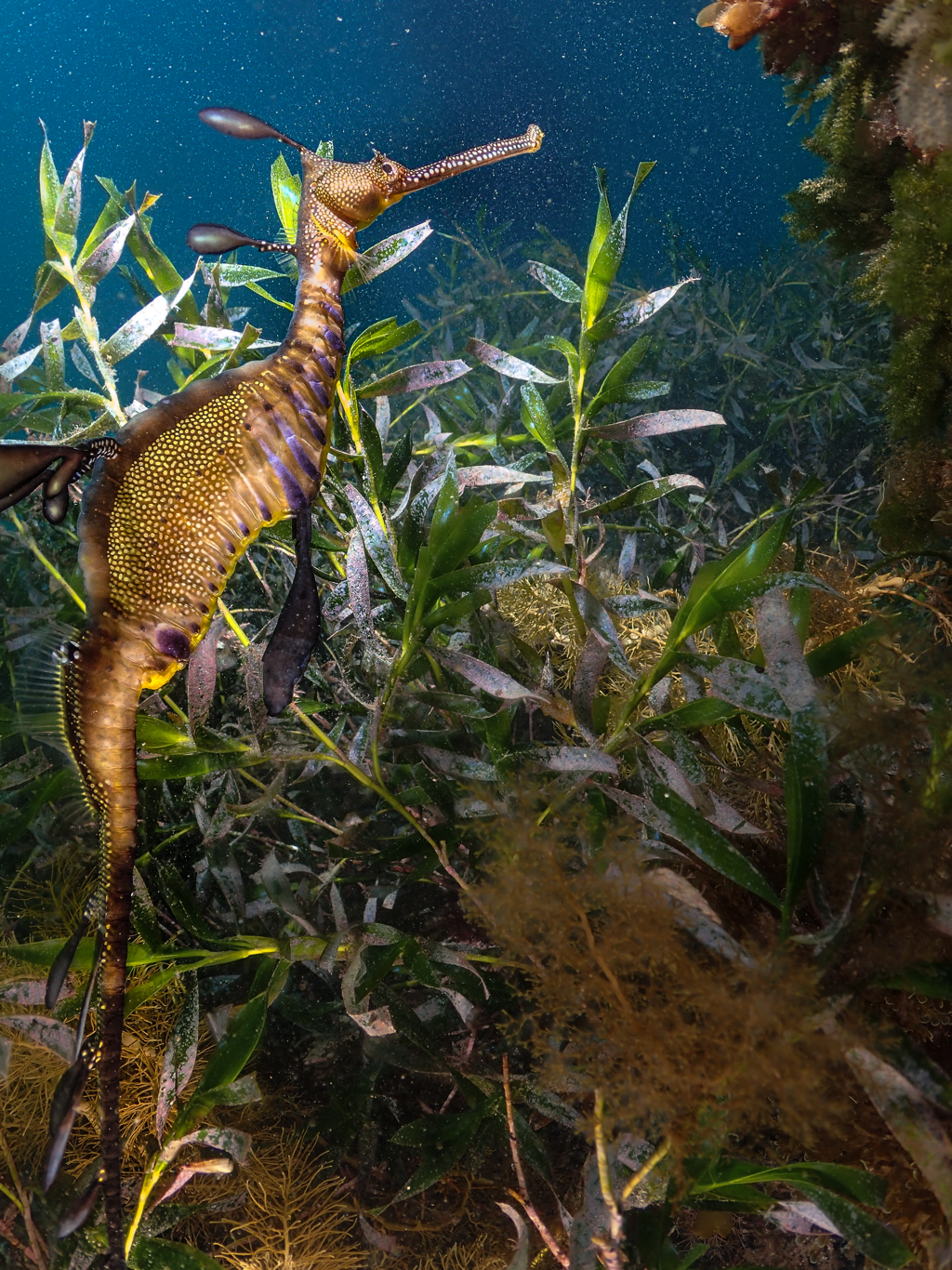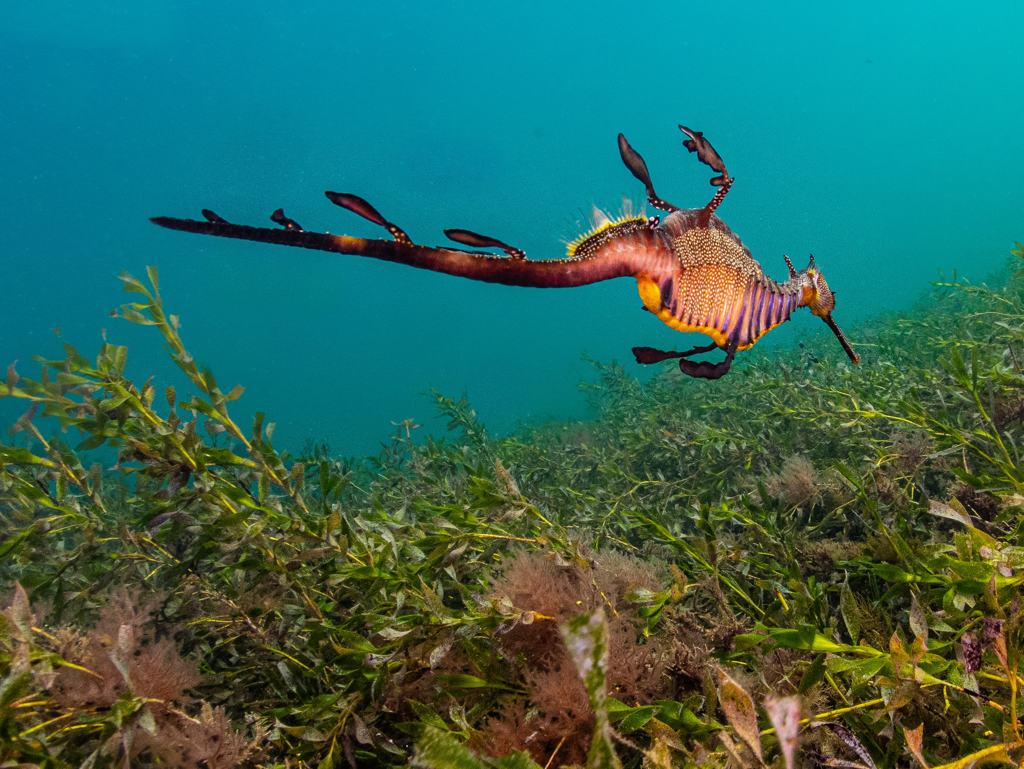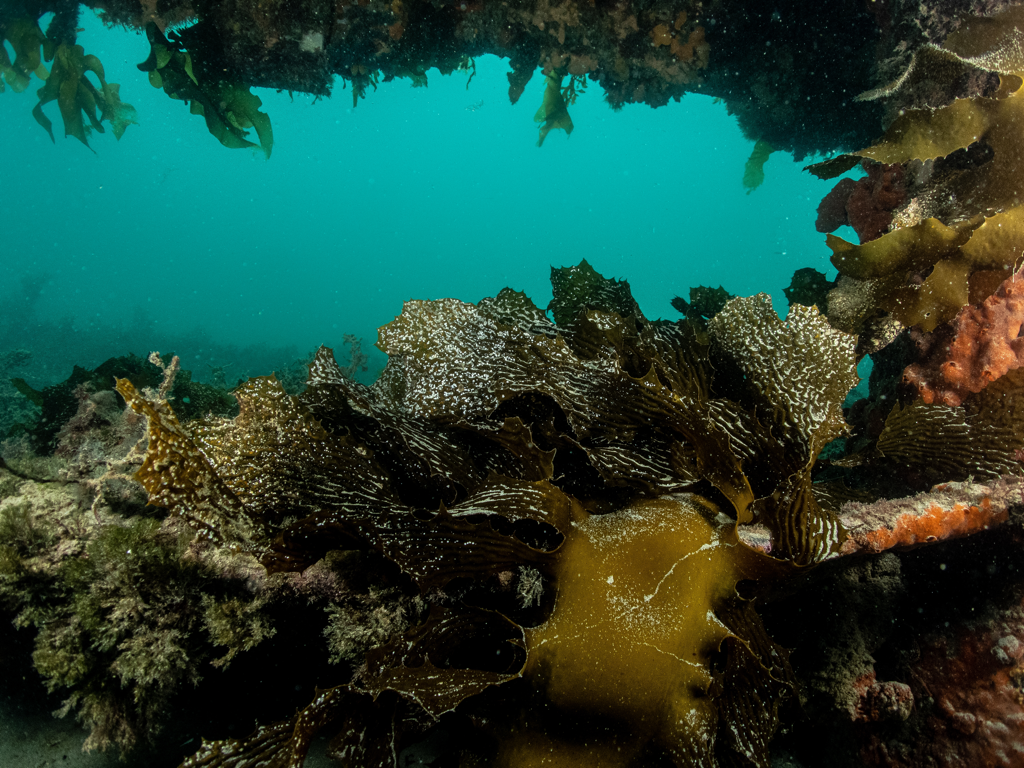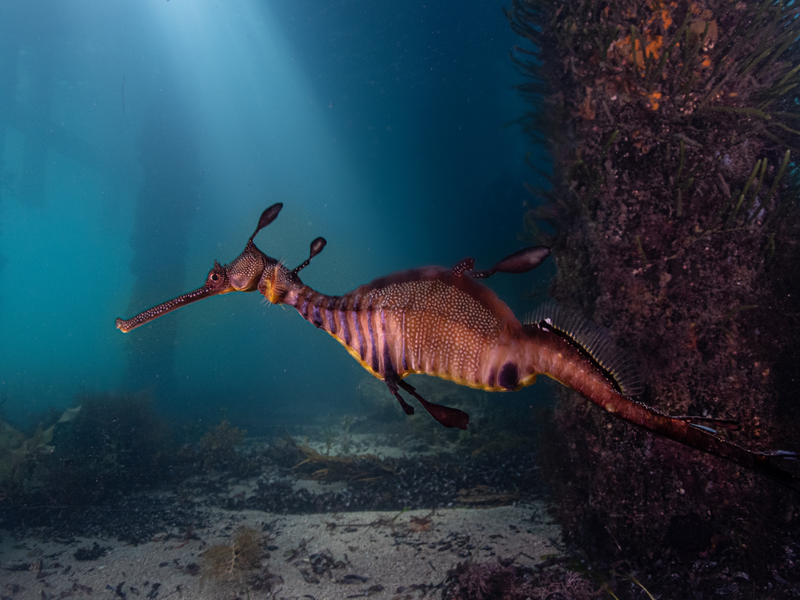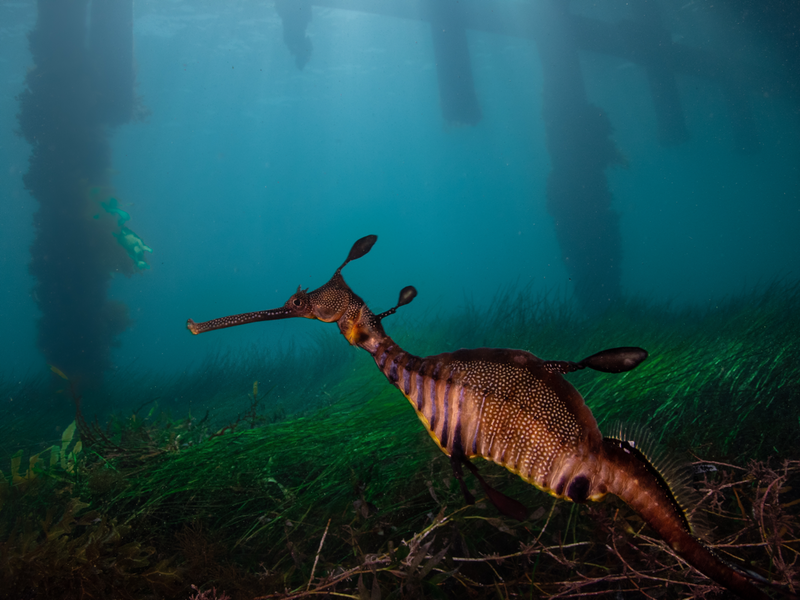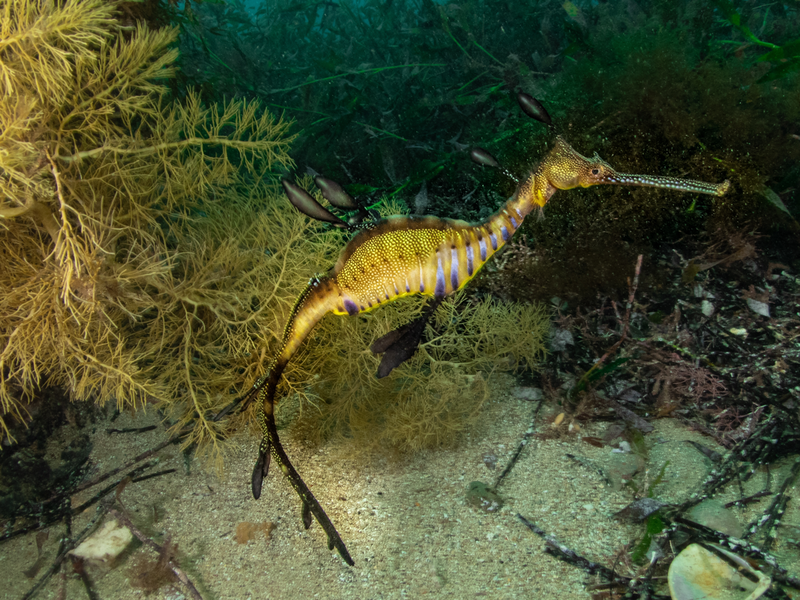Enter the Dragon - A Guide to Seeing the Weedy Seadragons of Flinders Pier, Melbourne Australia.28/1/2020
Only found in the relatively shallow coastal waters from Port Stephens in NSW, through Victoria, Tasmania, South Australia, and Geraldton in Western Australia, these captivating animals are every bit (if not more) as wonderful as any species we’ve seen in the tropics. The best place to see these guys in Victoria is no doubt the local pier in the small hamlet of Flinders, a mere 100 km from Melbourne’s CBD. And while the pier is also home to cuttlefish, smooth rays, crabs and plenty of other critters, the real stars of this dive are the dragons. So much so that the BBC’s Natural History Film Unit spent three weeks at Flinders Pier in January 2016 to get footage of the dragons for Episode 5 of Blue Planet II. The pier has a grassy bottom which is why it’s the perfect home for the dragons. There are dozens of dragons here, and during the right season you might even see the males delicately carrying their eggs around. Like their close relative the pipefish, the male dragons take responsibility when it comes to child rearing. Each year in the spring, an elegant dance takes place, where the female’s bright pink fertilised eggs are transferred to the male’s tail. He will carry these eggs for around 8 weeks until the fully formed baby dragons hatch and venture into the green seas to fend for themselves by taking shelter in the sea grass. Often invisible to the untrained eye, finding these guys for the first time can be a little challenging, but as soon as you’ve spotted your first one, more and more just seem to magically appear. You’ll often find them hovering around fish larvae and plankton, constantly feeding and often unaware of your presence. Given they don’t have a proper stomach, they have to constantly forage for food, sucking their meal through their tiny mouth located at the tip of their snout. How to dive Flinders Pier While the pier can be dived at any time, it’s best avoided in strong Easterly or North Easterly winds, as when the sea is rough the surge and subsequent poor visibility can make it unpleasant. Visibility will of course be at its best when there hasn’t been recent rain. You can enter and exit from one of the many ladders on the pier itself, or from the shore - depending on the tide. This is a shallow dive (around 5 meters) even when the tide is high, so it’s best dived on an incoming tide if possible. See Tides Chart or WillyWeather to plan your dive. When diving, practice good buoyancy and be careful to stay off the weedy bottom as this is the dragons habitat. The pier’s pylons also have lovely growth and are home to many other critters, so be careful not to kick the pylons as you move throughout the dive. As with most piers in Australia, fisherman are often present, so be sure to take your dive knife to de tangle yourself from potential hazards like fishing line, hooks and lures. Be sure to stay underneath the pier at all times to avoid fishing and boat traffic, and be mindful when surfacing. If you have a dive flag to alert people of your presence that’s even better! The water temperature in the summer months ranges from 16 - 19 degrees. We dived in late January in 19 degree water temperature with a 7.5 mm suit, hood, boots and gloves. The diving culture in the region is very independent, so if don’t have your own tanks or equipment, or you’re a visitor, you’ll need to hire these. Both the Scuba Doctor and Extreme Water Sports are open from 7.30 am in the summer months and can provide you with everything you need, including tank and equipment hire. So that’s it. Don’t let the logistics and cold water turn you off, because once you encounter these beauties you’ll be totally in love! And it’s a great little side trip to add to your next visit to Melbourne!
9 Comments
Bill Walker
29/1/2020 09:01:55 am
Beautiful photos and a great story. Love the video.
Reply
Neat
29/1/2020 09:06:43 am
Thanks Bill. They are very special creatures, although it was colder than we’re used to!
Reply
Jennifer Leung
3/1/2023 02:35:59 am
I’m fascinated by these and can stare at them for hours at the aquarium but it’s on my bucket list to see in the wild. Is there a particular time if the year when the visibility will be the best?
Reply
Neat
3/1/2023 09:28:34 am
Hi Jennifer, there is no particular time of the year when visibility is best as the visibility depends on the sea surge. While the pier can be dived at any time, it’s best avoided in strong Easterly or North Easterly winds, as when the sea is rough the surge stirs up sand and creates subsequent poor visibility. The surge can also make it unpleasant. Visibility will of course be at its best when there hasn’t been recent rain. The best time is on a clear sunny day on an incoming tide with minimal wind. Summer is the best in our view as you also get lively rays of sunlight in the shallow waters making for a very pretty dive. Avoid days when there is strong Easterly or North Easterly winds. Hope this helps :-)
Reply
Angela B
16/3/2023 09:50:25 pm
Hi - can you see them if you snorkel instead of dive? Do you need permits to snorkel or dive by he pier?
Reply
Neat
16/3/2023 10:07:32 pm
Hi Angela, yes, you can easily see the dragons just snorkelling. The depth is often shallow, less than 5 metres. There is no need for any permits for diving or snorkelling. Just park your car, jump in the water and enjoy!
Reply
Cheryle
19/2/2024 04:32:28 pm
Great information and video, Thankyou
Reply
Anne
25/2/2024 10:21:58 pm
Thank you for such lovely photos of the weedy sea dragon. I have just returned from a stay at Walkerville where I found a sea dragon washed up on a previous high tide. Very starched white, so he had been there awhile. Must get snorkelling.
Reply
Leave a Reply. |
|

